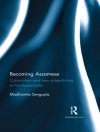In October 1918, war-weary German sailors mutinied when the Imperial Naval Command ordered their engagement in one final, fruitless battle with the British Royal Navy. This revolt, in the dying embers of the First World War, quickly erupted into a full scale revolution that toppled the monarchy and inaugurated a period of radical popular democracy.
The establishment of the Weimar Republic in 1919 ended the revolution, relegating all but its most prominent leaders to a historical footnote. In A People’s History of the German Revolution, William A. Pelz cuts against the grain of mainstream accounts that tend to present the revolution as more of a ‘collapse’, or just a chaotic interregnum that preceded the country’s natural progression into a republic.
Going beyond the familiar names of Karl Liebknecht, Rosa Luxemburg or Clara Zetkins, Pelz explores the revolution from the bottom up, focusing on the active role that women, rank-and-file activists, and ordinary workers played in its events. Rejecting the depiction of agency as exclusively in the hands of international actors like Woodrow Wilson or in those of German elites, he makes the compelling case that, for a brief period, the actions of the common people shaped a truly revolutionary society.
Cuprins
Foreword by Mario Kessler
Introduction: What German Revolution?
1. Industrialization and the Emergence of the German Working Class
2. The Rise of Popular Radicalism
3. War, Suffering and Resistance
4. The Road to the November Revolution
5. The Kaiser Goes, the Generals Remain
6. Provocation, Revolt and Repression
7. Women in the War and the Revolution
8. Death Agony of the Revolution
Conclusion
Notes
Index
Despre autor
Mario Kessler is Associate Professor at the Centre for Contemporary History, Potsdam, Germany. He is the author of Revolution and Counterrevolution: Studies on Violence and Humanity from the Century of Disasters (2016) and Ruth Fischer: A Life with and against Communists (2013) amongst many other works.












